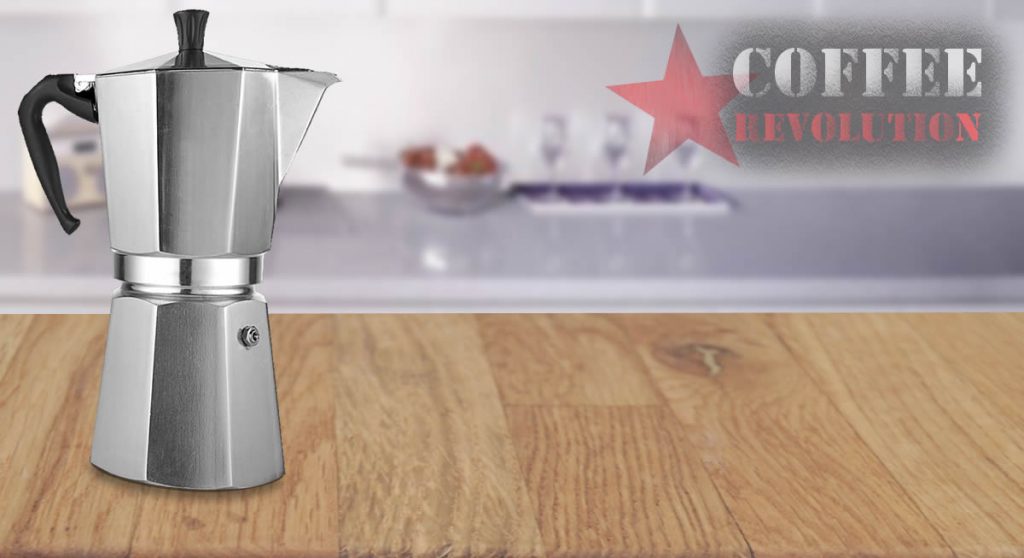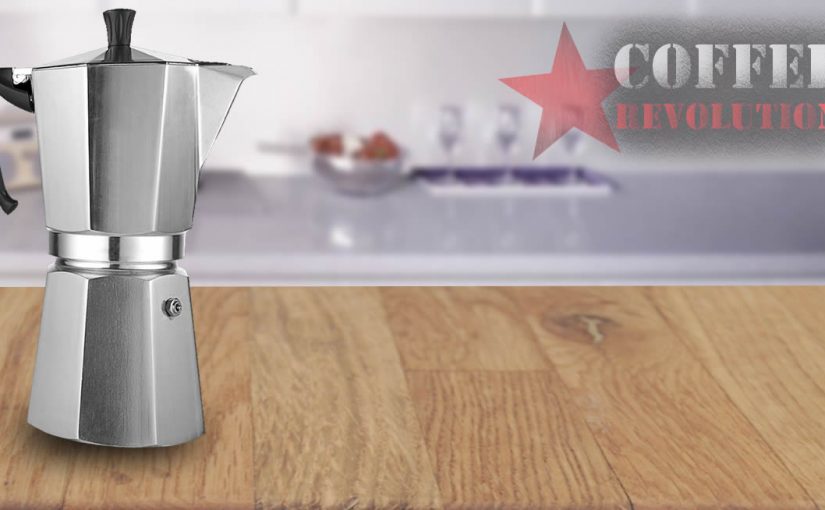Italian Moka pot Coffee maker
In 1933, an Italian man named Alfonso Bialetti designed the first stovetop espresso machine, dubbed the Bialetti Moka Express. During this time period, people in Italy only had one choice when it came to getting delicious espresso, and that was to go to a cafe.
The Moka pot revolutionized the way people in Italy consumed coffee, making it easily brewable in a home setting.
The Moka Pot itself is traditionally made out of aluminum, as this metal was very abundant in Italy, and cheap. The pot itself consists of five parts: a circular metal filter, a bottom water reservoir, a rubber gasket, a basket for the coffee, and the top pouring section.
Despite the appearance, brewing with a Moka Pot is actually pretty simple.
How to make coffee in a Moka Pot
First, fill the bottom reservoir with water to the marked “fill” line, and set it on low heat on the stove. Be sure to not fill the pot past the “fill” line, as you would risk the possibility of blowing the release valve. Preheating the water this way will ensure that the coffee grounds do not roast anymore during the somewhat long brewing process

- While the water heats up, grind a few tablespoons of your favorite coffee relatively fine. It is good to start off using a grind that isn’t very fine, and go down from there until you get a flavor you like.
Be careful to not use coffee that is too fine, as it could create a lot of excess pressure inside the device, and blow the release valve.
The amount of coffee required is based on how many cups the brewer is designed to brew. All Moka Pots will say on the packaging how many cups they make, from 1 to 12.
- Once the coffee is ground, dump it into the little filter basket and run a knife against the top to level the bed of coffee; do not tamp the grounds.
- By now, the water inside the bottom portion should be pretty hot, so assemble the top section by putting the rubber gasket on top of the circular metal filter, and insert it into the bottom of the top section.
- Turn the heat off, insert the basket of coffee grounds, and then with the assistance of a pot holder, screw on the top portion snugly, then turn the heat back on, using a low to low-medium setting.
- While brewing, I like to have the top open on mine so I can easily see when the coffee starts pouring out of the little spout, so I can gauge when to turn the heat off.
- After a few moments, coffee will start to come out of the spout, and once the top portion is around half full, dim the heat as much as possible, or completely turn the stove off. This is to prevent over extraction of the coffee grounds.
- After it has finished brewing, simply pour it into cups and serve.
Because the Moka Pot uses steam pressure to brew its espresso, the flavor will be a tad bit different when compared to an electric pump driven machine, but it is still fantastic nonetheless.
One of the downsides of a stovetop Moka pot espresso machine, is how annoying they can be to clean, requiring each part to be washed with warm and soapy water.
But, the device itself can brew a good amount of coffee, and can easily have cream and sugar added without killing the natural flavor of the coffee.
For long term storage, I suggest keeping the rubber gasket separate, as the scent can leech onto surrounding items.
